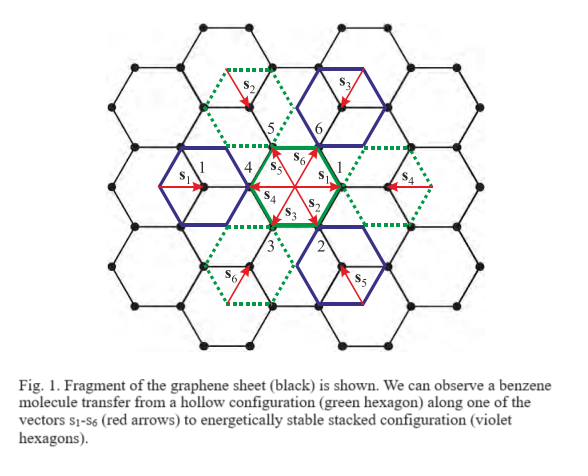Speaker
Description
In our report, we review the domain boundaries in the structure of benzene monolayer adsorbed on a graphene sheet. It is shown in [1] that the monolayer’s structure can be complicated even for benzene, the simplest representative of the cyclic hydrocarbons. It was found in [2] that there exist two different energy states of the adsorbed benzene molecule: 1) the symmetric (hollow) unstable state, where the benzene molecule is placed right over the graphene hexagon; 2) the non-symmetric (stacked) stable configuration, where the benzene molecule’s center is placed above one of graphene atoms. The low-symmetry structure is characterized by the presence of six domains, known as star domains. The representatives of these domains at the graphene hexagonal layer are star vectors that describe transitions from symmetric high energy state into the stable low symmetric position.

[1]. Lykah, V. A., & Syrkin, E. S. (2022). Domains of the adsorbed benzene monolayer on graphene. Low Temperature Physics, 48(4), 353-358.
https://doi.org/10.1063/10.0009743
[2]. Alzahrani, A. Z. (2011). Structural and electronic properties of graphene upon molecular adsorption: DFT comparative analysis. Graphene Simulation, 1, 21–38.
https://doi.org/10.5772/20356
